Lenovo IdeaPad 3 Gen 6 (14″) review – surprisingly good performance and efficiency
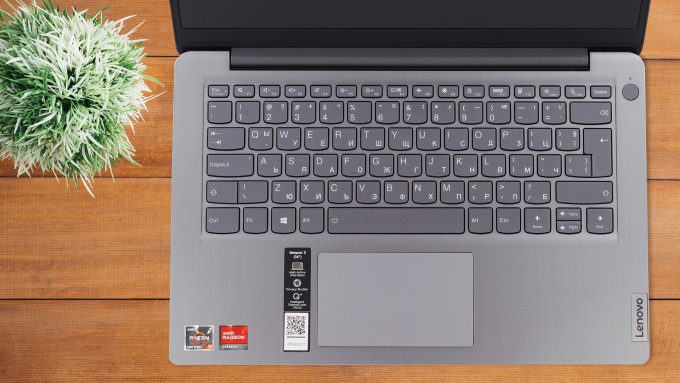 Out of the popular manufacturers out there, Lenovo sits on the top in terms of sales. And this is mainly because of their huge budget-laptop market share. One of its main devices in this price range is undoubtedly the IdeaPad 3.
Out of the popular manufacturers out there, Lenovo sits on the top in terms of sales. And this is mainly because of their huge budget-laptop market share. One of its main devices in this price range is undoubtedly the IdeaPad 3.
Today, we are checking out the IdeaPad 3 Gen 6 (14″). Note that it is not an “i” model, which means that it is built on an AMD platform. Although the CPUs of choice bear the Ryzen 5000U name, they are part of the Zen 2 architecture. With that said, we can safely assume that AMD rebranded some of its Ryzen 4000U processors.
Nevertheless, it is great to see that a budget-conscious device receives a powerful and efficient chipset.
Additionally, the display options reveal two versions. Both have a 1080p resolution, but one of them has a TN panel, while the other is equipped with an IPS one.
You can check the prices and configurations in our Specs System: https://laptopmedia.com/series/lenovo-ideapad-3-14-2021/
Contents
Specs Sheet
- HDD/SSD
- up to 4000GB SSD
- M.2 Slot
- 1x M.2 NVMe slot See photo
- RAM
- up to 36GB
- OS
- Windows 10 Home, Windows 11 Pro, Windows 11 Home, Windows 10 Pro
- Battery
- 38Wh, 2-cell, 45Wh, 3-cell
- Body material
- Plastic / Polycarbonate
- Dimensions
- 324.2 x 215.7 x 19.9 mm (12.76" x 8.49" x 0.78")
- Weight
- 1.41 kg (3.1 lbs)
- Ports and connectivity
- 1x USB Type-A
- 2.0
- 1x USB Type-A
- 3.2 Gen 1 (5 Gbps)
- 1x USB Type-C
- 3.2 Gen 1 (5 Gbps)
- HDMI
- 1.4b
- Card reader
- SD, SDHC, SDXC, MMC
- Ethernet LAN
- Wi-Fi
- 802.11ax
- Bluetooth
- 5.1
- Audio jack
- 3.5mm Combo Jack
- Features
- Fingerprint reader
- optional
- Web camera
- HD
- Backlit keyboard
- optional
- Microphone
- Dual Array Microphone
- Speakers
- 2x 1.5W, Dolby Audio
- Optical drive
- Security Lock slot
All Lenovo IdeaPad 3 (14″, 2021) configurations
What’s in the box?
Expectedly, the packaging of this device is pretty low-budget. You only get some paper manuals and a 65W power brick.
Design and construction
This laptop’s design resembles a brushed aluminum finish. However, the entire machine is made out of plastic. Additionally, we think that the material is pretty thin because there is a lot of flexing and bending going on there. It measures 19.9mm in profile and 1.41 kg in weight.
Expectedly, the lid cannot be opened with a single hand. If you are planning to use your laptop mainly outdoors, you will be happy to hear that it has a matte finish. Its bezels are thin, which gives the device a modern look. In addition to that, the HD camera comes with a privacy shutter.
Now, if we move to the base we will see a keyboard with an optional backlight, decent key travel, and clicky feedback. On the other hand, we observed a very prominent deck flex, even when lightly typing. In the top right corner of the base, you can see the power button, which doubles as a fingerprint reader.
As for the touchpad, it has a decent size, and offers a smooth gliding experience, thanks to the Mylar surface. While the clicking mechanism is okay, we found a slight gap between the moment you press, and the moment it registers a click.
Traditionally, the bottom panel is home to the ventilation grill and the speaker cutouts. Respectively, the hot air escapes the device from a slot, located between the base, and the hinge cover.
Ports
On the left side of the device, there is the power plug, a USB Type-A 3.2 (Gen. 1) port, an HDMI 1.4b connector, a USB Type-C 3.2 (Gen. 1) port, and an audio jack. Then, on the right, you will find a USB Type-A 2.0 port and an SD card reader.
Disassembly, upgrade options and maintenance
To access this device’s internals, you need to undo all 9 Phillips-head screws. Then, pry the bottom panel with a plastic tool, and you will be able to effortlessly remove it from the chassis.
Unfortunately, Lenovo was quite lenient with the battery, as it has a capacity of only 38Wh.
In terms of storage, you get one 2.5-inch SATA drive bay, as well as two M.2 PCIe x4 slots. Memory-wise, there is one SODIMM slot that works together with the soldered 4GB of DDR4 RAM.
As for the cooling, the laptop has one heat pipe, as well as a fan and a heat sink, both of which come in decent sizes.
Display quality
Lenovo IdeaPad 3 Gen 6 (14″) has a Full HD display, model number AUO B140HAN04.E (AUO408D). Its diagonal is 14″ (35.56 cm), and the resolution – 1920 х 1080. Additionally, the screen ratio is 16:9, the pixel density – 157 ppi, their pitch – 0.161 x 0.161 mm. The screen can be considered Retina when viewed from at least 56 cm (from this distance, the average human eye can’t see the individual pixels).
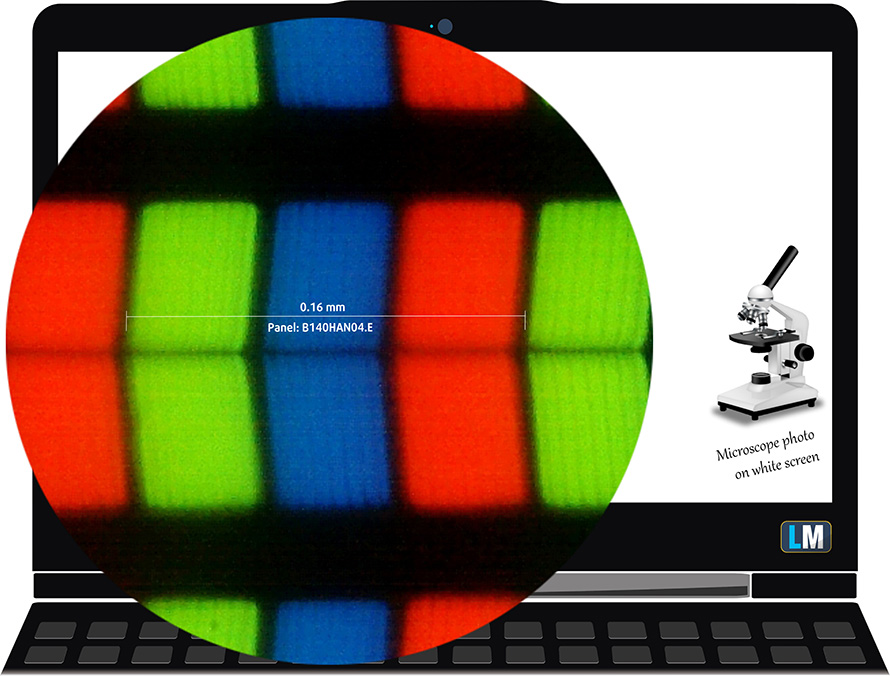
Its viewing angles are great. We have provided images at 45 degrees to evaluate quality.

The maximum measured brightness is 333 nits (cd/m2) in the middle of the screen and 320 nits (cd/m2) average across the surface with a maximum deviation of 11%. The Correlated Color Temperature on a white screen and at maximum brightness is 7260K (average) – colder than the 6500K optimum for sRGB.
In the illustration below you can see how the display performs from a uniformity perspective.
Values of dE2000 over 4.0 should not occur, and this parameter is one of the first you should check if you intend to use the laptop for color-sensitive work (a maximum tolerance of 2.0 ). The contrast ratio is good – 1310:1.
To make sure we are on the same page, we would like to give you a little introduction to the sRGB color gamut and the Adobe RGB. To start, there’s the CIE 1976 Uniform Chromaticity Diagram that represents the visible specter of colors by the human eye, giving you a better perception of the color gamut coverage and the color accuracy.
Inside the black triangle, you will see the standard color gamut (sRGB) that is being used by millions of people on HDTV and the web. As for the Adobe RGB, this is used in professional cameras, monitors, etc for printing. Colors inside the black triangle are used by everyone and this is an essential part of the color quality and color accuracy of a mainstream notebook.
Still, we’ve included other color spaces like the famous DCI-P3 standard used by movie studios, as well as the digital UHD Rec.2020 standard. Rec.2020, however, is still a thing of the future and it’s difficult for today’s displays to cover that well. We’ve also included the so-called Michael Pointer gamut, or Pointer’s gamut, which represents the colors that naturally occur around us every day.
The yellow dotted line shows Lenovo IdeaPad 3 Gen 6 (14″)’s color gamut coverage.
Its display covers 54% of the sRGB/ITU-R BT.709 (web/HDTV standard) in CIE1976.

Our “Design and Gaming” profile delivers optimal color temperature (6500K) at 140 cd/m2 luminance and sRGB gamma mode.
We tested the accuracy of the display with 24 commonly used colors like light and dark human skin, blue sky, green grass, orange, etc. You can check out the results at factory condition and also, with the “Design and Gaming” profile.
Below you can compare the scores of Lenovo IdeaPad 3 Gen 6 (14″) with the default settings (left), and with the “Gaming and Web design” profile (right).
The next figure shows how well the display can reproduce dark parts of an image, which is essential when watching movies or playing games in low ambient light.
The left side of the image represents the display with stock settings, while the right one is with the “Gaming and Web Design” profile activated. On the horizontal axis, you will find the grayscale, and on the vertical axis – the luminance of the display. On the two graphs below you can easily check for yourself how your display handles the darkest nuances but keep in mind that this also depends on the settings of your current display, the calibration, the viewing angle, and the surrounding light conditions.
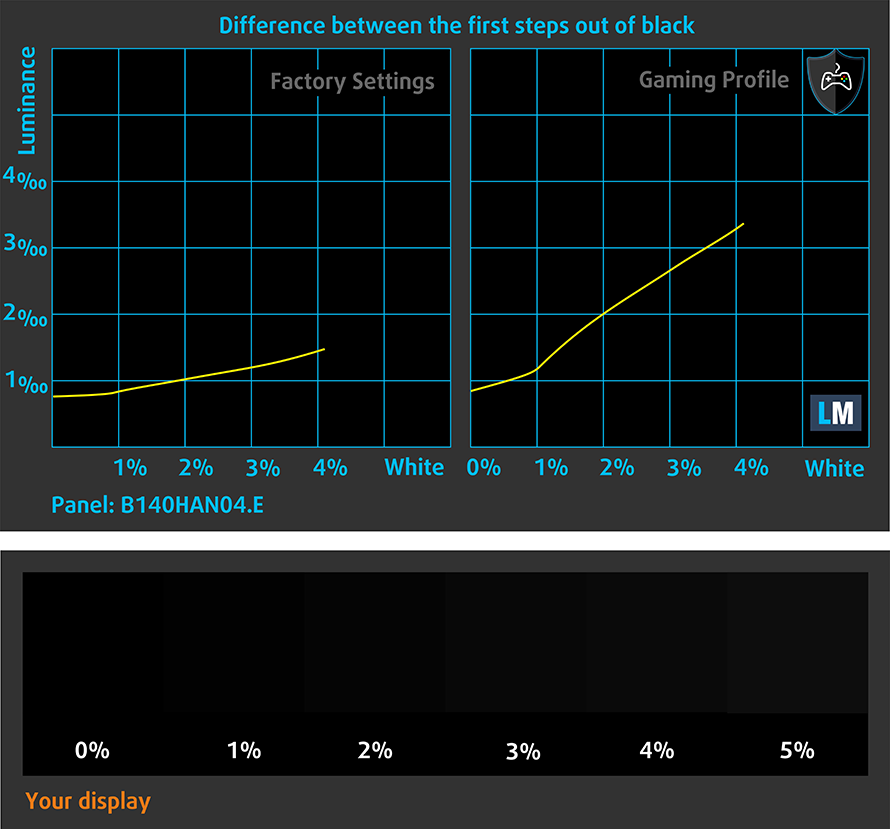
Response time (Gaming capabilities)
We test the reaction time of the pixels with the usual “black-to-white” and “white-to-black” method from 10% to 90% and vice versa.
We recorded Fall Time + Rise Time = 23 ms
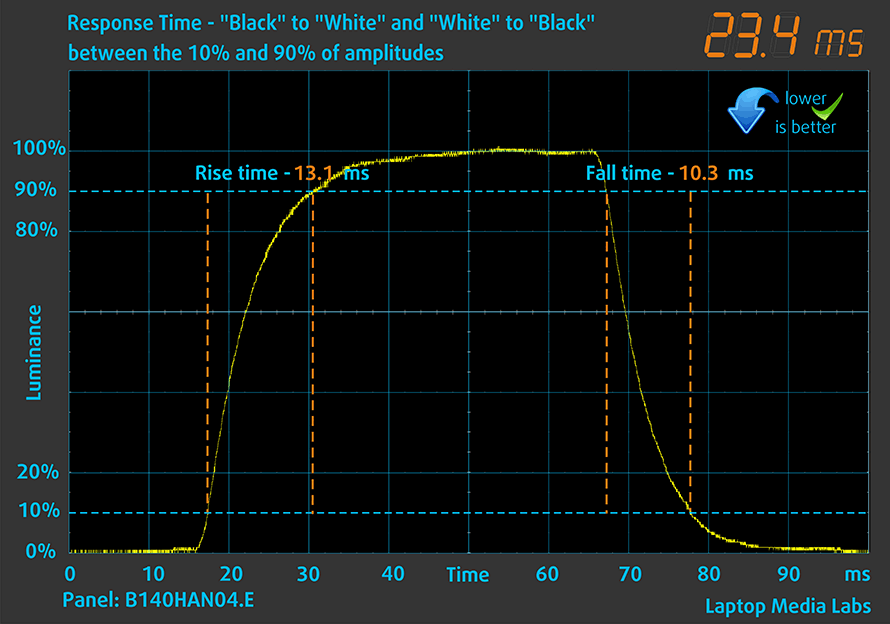
After that, we test the reaction time of the pixels with the usual “Gray-to-Gray” method from 50% White to 80% White and vice versa between 10% and 90% of the amplitude.
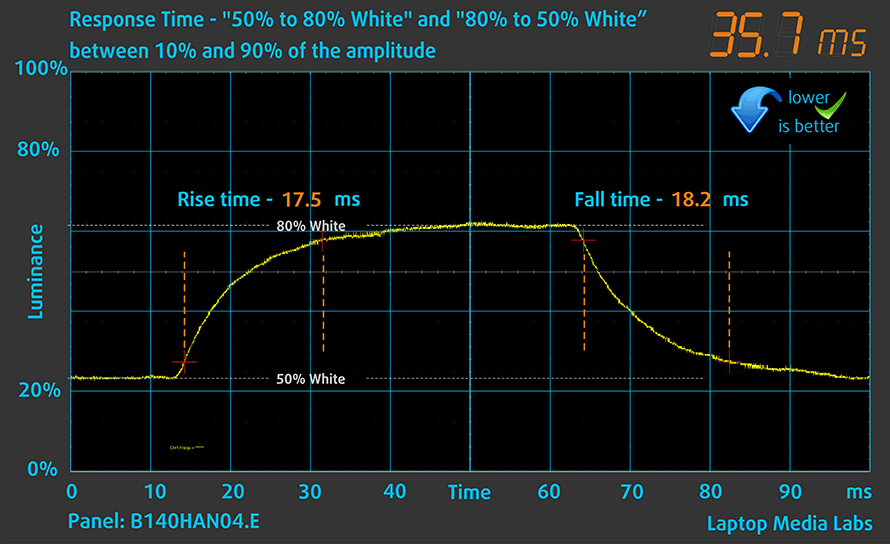
Health impact – PWM / Blue Light
PWM (Screen flickering)
Pulse-width modulation (PWM) is an easy way to control monitor brightness. When you lower the brightness, the light intensity of the backlight is not lowered, but instead turned off and on by the electronics with a frequency indistinguishable to the human eye. In these light impulses, the light/no-light time ratio varies, while brightness remains unchanged, which is harmful to your eyes. You can read more about that in our dedicated article on PWM.
Lenovo IdeaPad 3 Gen 6 (14″)’s display doesn’t use PWM at any brightness level. This ensures comfortable work even during long periods.
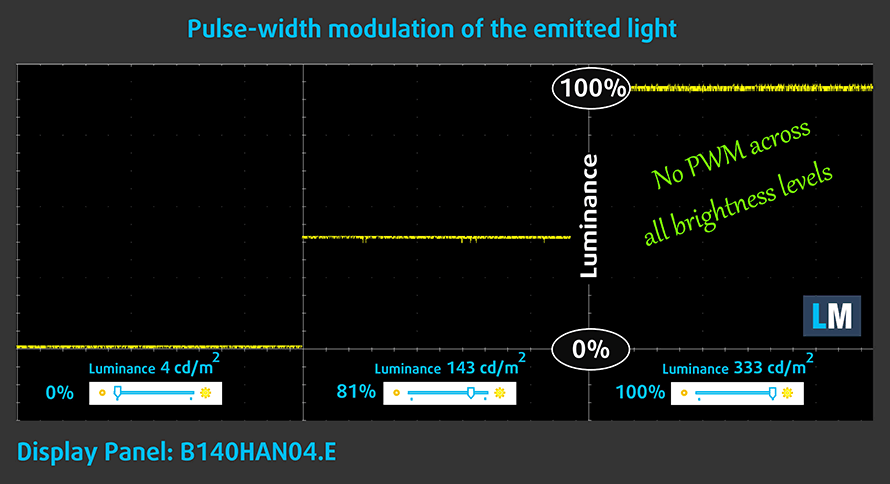
Blue light emissions
Installing our Health-Guard profile not only eliminates PWM but also reduces the harmful Blue Light emissions while keeping the colors of the screen perceptually accurate. If you’re not familiar with the Blue light, the TL;DR version is – emissions that negatively affect your eyes, skin, and your whole body. You can find more information about that in our dedicated article on Blue Light.
Conclusions
Lenovo IdeaPad 3 Gen 6 (14″)’s IPS panel has a Full HD resolution, comfortable viewing angles, and a good contrast ratio. Its backlight doesn’t flicker. On the other hand, it covers only 54% of the sRGB color gamut – typical for a budget panel.
Buy our profiles
Since our profiles are tailored for each display model, this article and its respective profile package are meant for Lenovo IdeaPad 3 Gen 6 (14″) configurations with 14.0″ AUO B140HAN04.E (AUO408D) (FHD, 1920 × 1080) IPS panel.
*Should you have problems with downloading the purchased file, try using a different browser to open the link you’ll receive via e-mail. If the download target is a .php file instead of an archive, change the file extension to .zip or contact us at [email protected].
Read more about the profiles HERE.
In addition to receiving efficient and health-friendly profiles, by buying LaptopMedia's products you also support the development of our labs, where we test devices in order to produce the most objective reviews possible.

Office Work
Office Work should be used mostly by users who spend most of the time looking at pieces of text, tables or just surfing. This profile aims to deliver better distinctness and clarity by keeping a flat gamma curve (2.20), native color temperature and perceptually accurate colors.

Design and Gaming
This profile is aimed at designers who work with colors professionally, and for games and movies as well. Design and Gaming takes display panels to their limits, making them as accurate as possible in the sRGB IEC61966-2-1 standard for Web and HDTV, at white point D65.

Health-Guard
Health-Guard eliminates the harmful Pulse-Width Modulation (PWM) and reduces the negative Blue Light which affects our eyes and body. Since it’s custom tailored for every panel, it manages to keep the colors perceptually accurate. Health-Guard simulates paper so the pressure on the eyes is greatly reduced.
Get all 3 profiles with 33% discount
Sound
Lenovo IdeaPad 3 Gen 6 (14″)’s speakers produce a sound with decent quality. Its low tones have some deviations from clarity, while the mids and highs are clear.
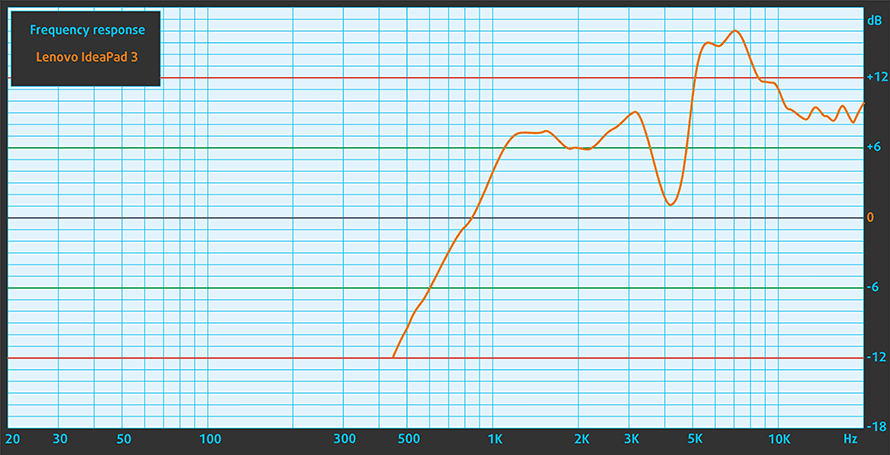
Drivers
All of the drivers and utilities for this notebook can be found here: https://pcsupport.lenovo.com/us/en/products/laptops-and-netbooks/3-series/ideapad-3-14alc6/downloads/driver-list
Battery
Now, we conduct the battery tests with Windows Better performance setting turned on, screen brightness adjusted to 120 nits, and all other programs turned off except for the one we are testing the notebook with. Surprisingly, this laptop’s 38Wh battery pack delivered 8 hours and 53 minutes of Web browsing, and 7 hours and 36 minutes of video playback.
In order to simulate real-life conditions, we used our own script for automatic web browsing through over 70 websites.

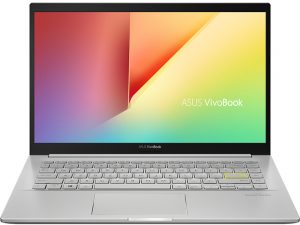
For every test like this, we use the same video in HD.


CPU options
This laptop can be purchased with one of three processors – Ryzen 3 5300U, Ryzen 5 5500U, Ryzen 7 5700U. Although they are part of the Ryzen 5000U, they are actually built on the Zen 2 architecture.
Results are from the Cinebench 20 CPU test (the higher the score, the better)
Results are from our Photoshop benchmark test (the lower the score, the better)
GPU options
There are no dedicated graphics options here. However, the integrated Radeon RX Vega 6 and Vega 7 should be powerful enough for day-to-day usage.
Results are from the 3DMark: Time Spy (Graphics) benchmark (higher the score, the better)
Results are from the 3DMark: Fire Strike (Graphics) benchmark (higher the score, the better)
Results are from the Unigine Superposition benchmark (higher the score, the better)
Gaming tests

| CS:GO | HD 1080p, Low (Check settings) | HD 1080p, Medium (Check settings) | HD 1080p, MAX (Check settings) |
|---|---|---|---|
| Average FPS | 107 fps | 66 fps | 44 fps |

| DOTA 2 | HD 1080p, Low (Check settings) | HD 1080p, Normal (Check settings) | HD 1080p, High (Check settings) |
|---|---|---|---|
| Average FPS | 106 fps | 68 fps | 36 fps |
Temperatures and comfort
Max CPU load
In this test we use 100% on the CPU cores, monitoring their frequencies and chip temperature. The first column shows a computer’s reaction to a short load (2-10 seconds), the second column simulates a serious task (between 15 and 30 seconds), and the third column is a good indicator of how good the laptop is for long loads such as video rendering.
Average core frequency (base frequency + X); CPU temp.
| AMD Ryzen 3 5300U (15W TDP) | 0:02 – 0:10 sec | 0:15 – 0:30 sec | 10:00 – 15:00 min |
|---|---|---|---|
| Lenovo IdeaPad 3 Gen 6 (14″) | 3.30 GHz (B+27%) @ 68°C @ 25W | 3.12 GHz (B+20%) @ 75°C @ 22W | 2.97 GHz (B+14%) @ 72°C @ 18W |
We are impressed by the high sustained frequency, and the rather low temperatures from the Ryzen 3 5300U found on the IdeaPad 3 Gen 6 (14″).
Comfort during full load
Even under extreme load conditions, the laptop isn’t too loud. Also, the maximum temperature on the keyboard is right about body temperature, which is good.
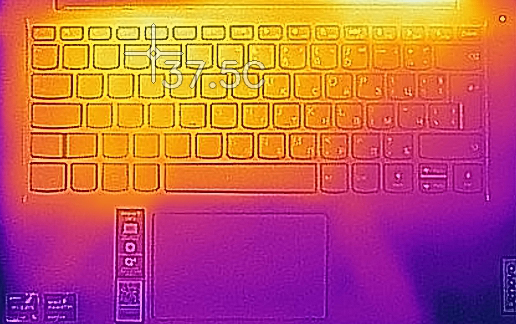
Verdict
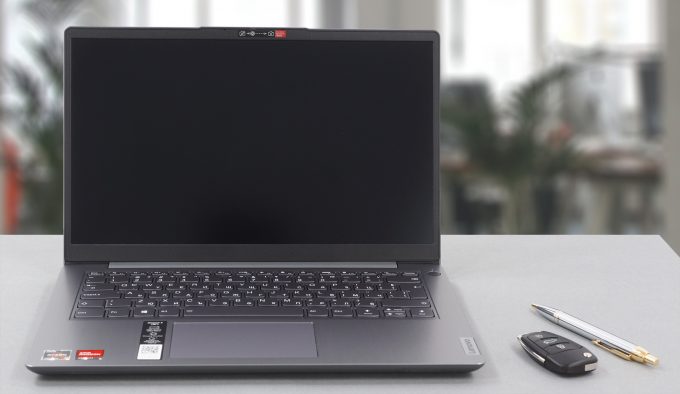 Do you know what is impressive? That the Ryzen 3 5300U – basically the lowest spec Ryzen 5000U processor offers pretty much the same performance as the Core i5-1135G7, that we found on the larger IdeaPad 3i Gen 6 (15″). This brings the 14-inch device to another level. Yes, the build quality is not great, but for that price, you just can’t expect better.
Do you know what is impressive? That the Ryzen 3 5300U – basically the lowest spec Ryzen 5000U processor offers pretty much the same performance as the Core i5-1135G7, that we found on the larger IdeaPad 3i Gen 6 (15″). This brings the 14-inch device to another level. Yes, the build quality is not great, but for that price, you just can’t expect better.
But the processing power was not the only thing that surprised us. Since the notebook packs a tiny 38Wh battery, we were expecting to see mediocre screen-on times. However, we got almost 9 hours of Web browsing, and about 7 hours and a half of video playback. Props to Lenovo for the great optimization.
Lenovo IdeaPad 3 Gen 6 (14″)’s IPS panel (AUO B140HAN04.E (AUO408D)) has a Full HD resolution, comfortable viewing angles, and a good contrast ratio. Its backlight doesn’t flicker. On the other hand, it covers only 54% of the sRGB color gamut – typical for a budget panel.
Other than that, the laptop has an SD card reader and a pretty decent I/O. Also, it features one SODIMM slot for memory upgrades, an M.2 slot for fast storage, and a 2.5-inch SATA slot for your video library.
Ultimately, we think that this will be one of the bangers in the budget market in 2021. If we have to be honest, you don’t need to spend your money on the more powerful CPUs, as the Ryzen 3 5300U will do the job 10 out of 10 times.
You can check the prices and configurations in our Specs System: https://laptopmedia.com/series/lenovo-ideapad-3-14-2021/
Pros
- 1x SODIMM, 1x M.2 PCIe x4, 1x 2.5-inch SATA
- Optional fingerprint reader
- No PWM (AUO B140HAN04.E (AUO408D))
- SD card slot
- Surprisingly good performance
- Decent battery life thanks to great optimization
Cons
- Plastic build with poor quality
- 54% sRGB coverage (AUO B140HAN04.E (AUO408D))
- Unstable hinges
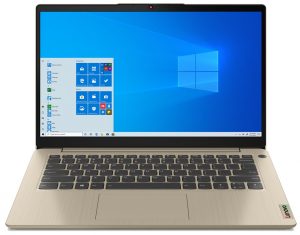
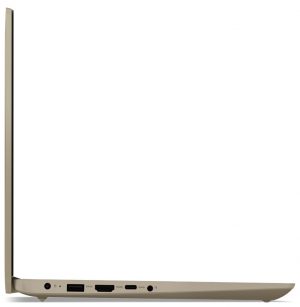
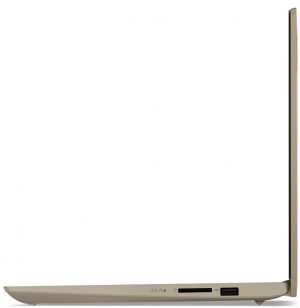
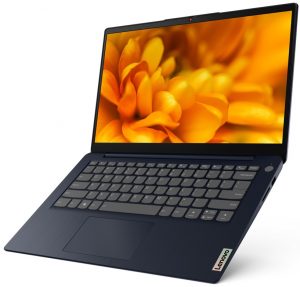
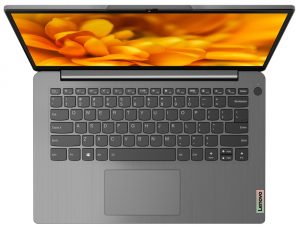

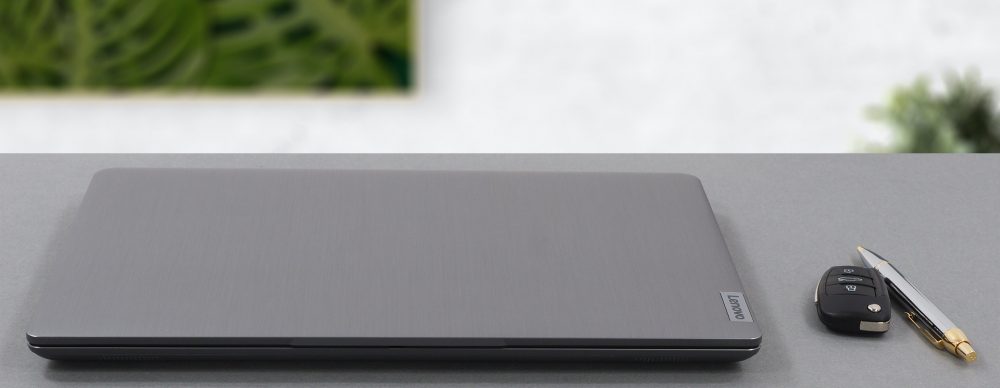
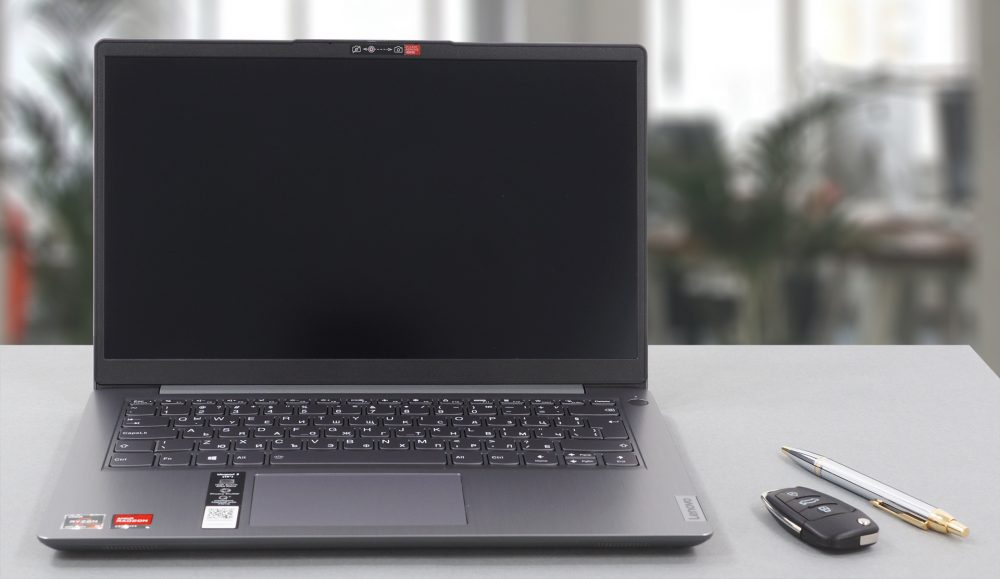
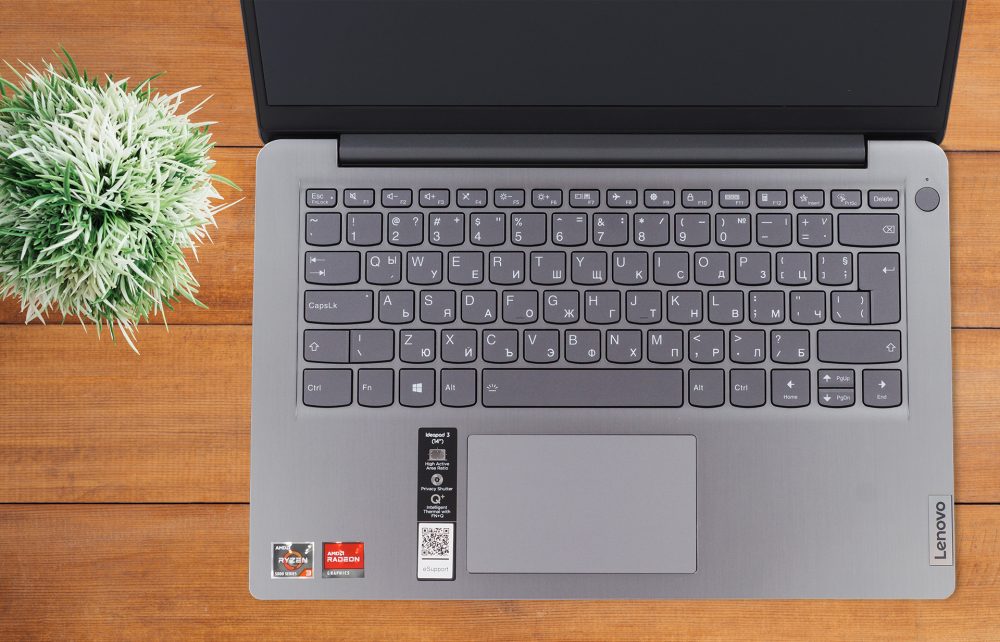
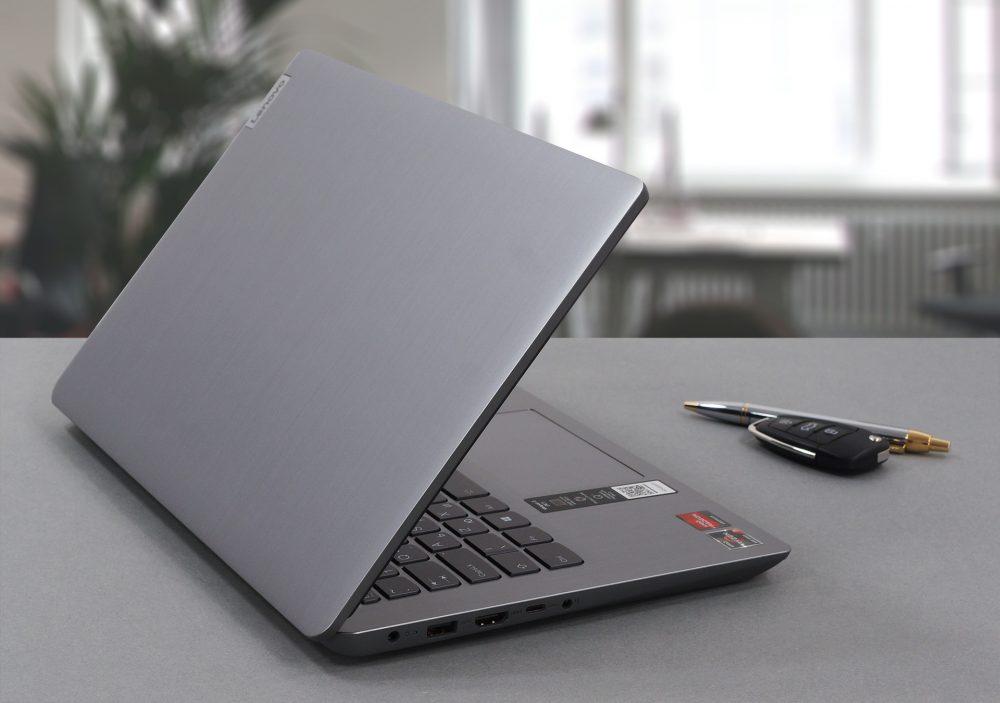

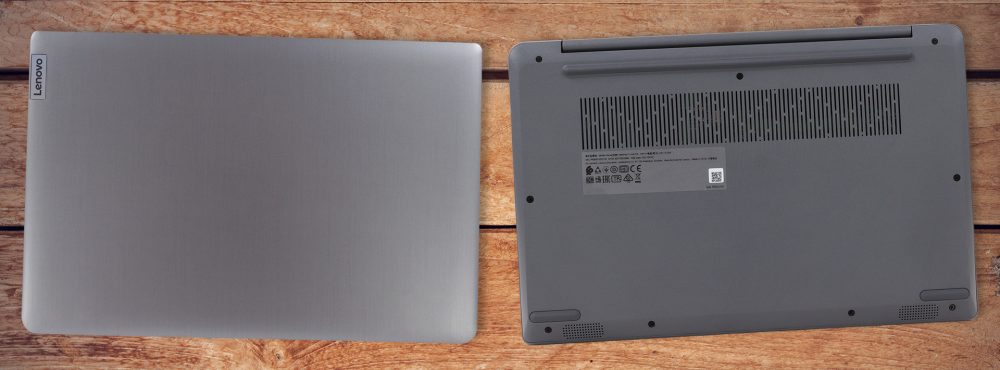


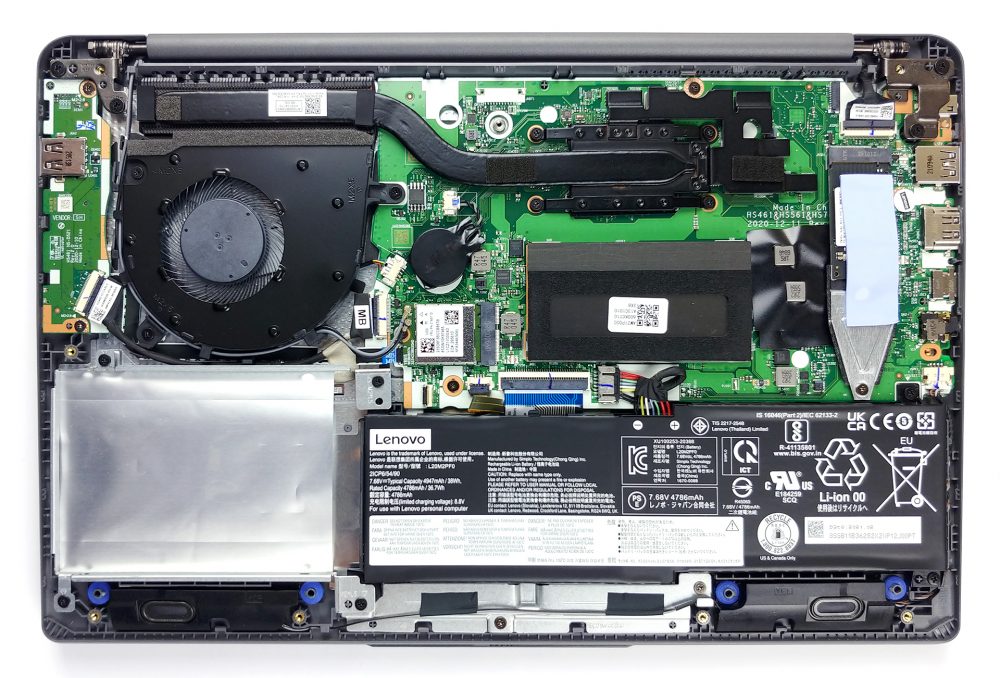
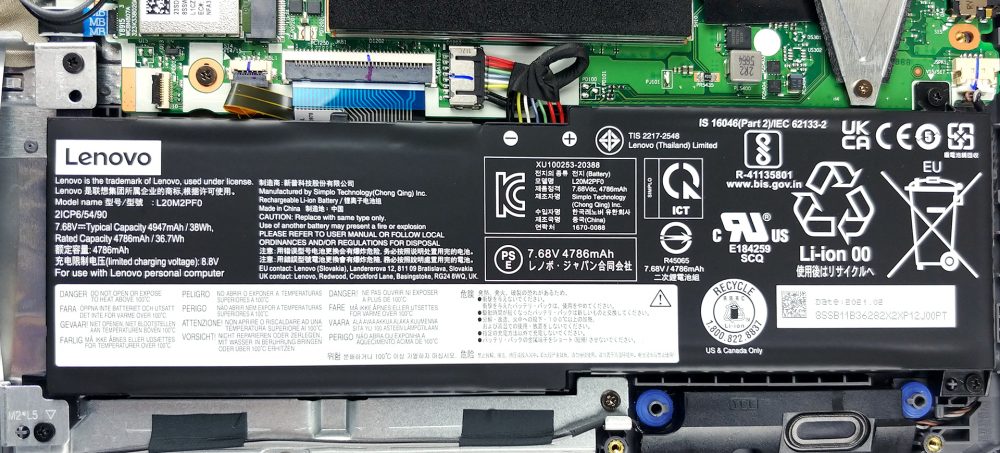
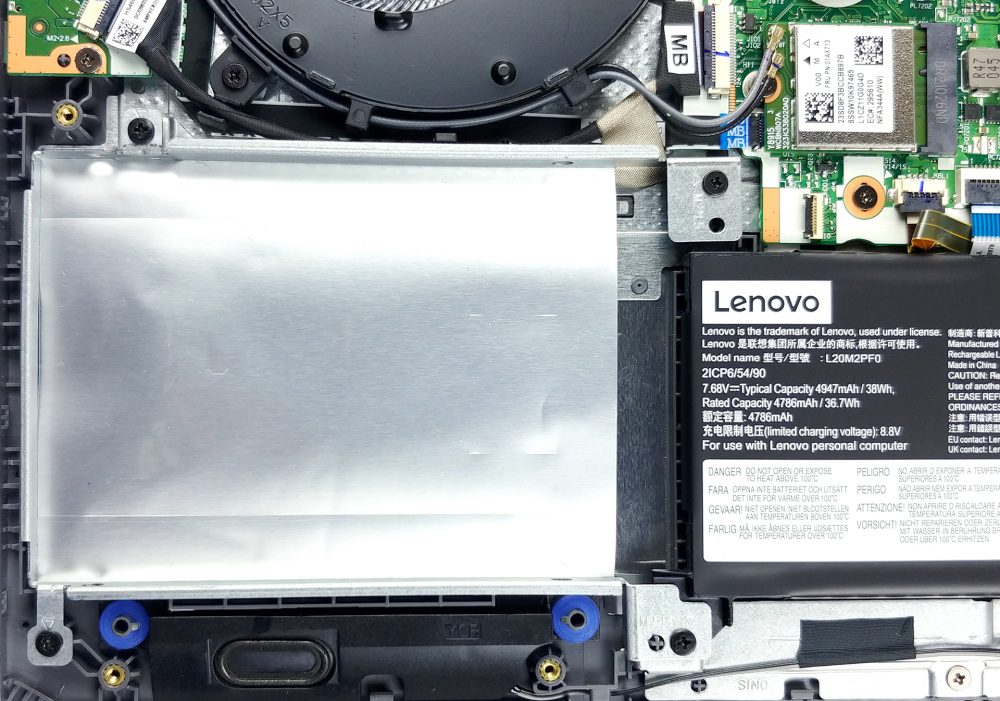
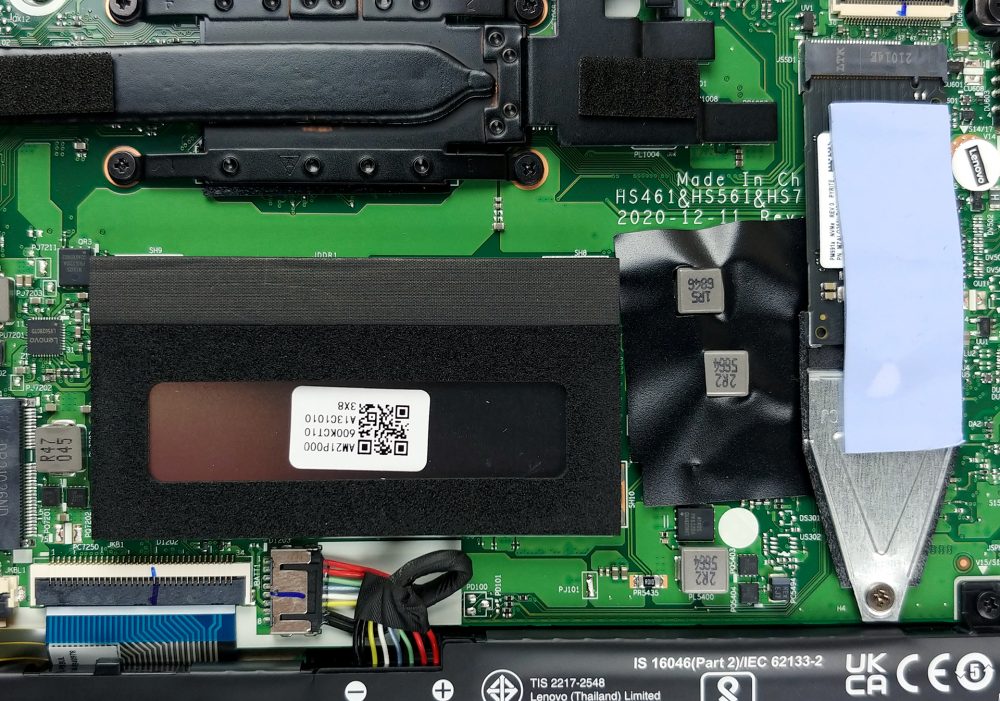
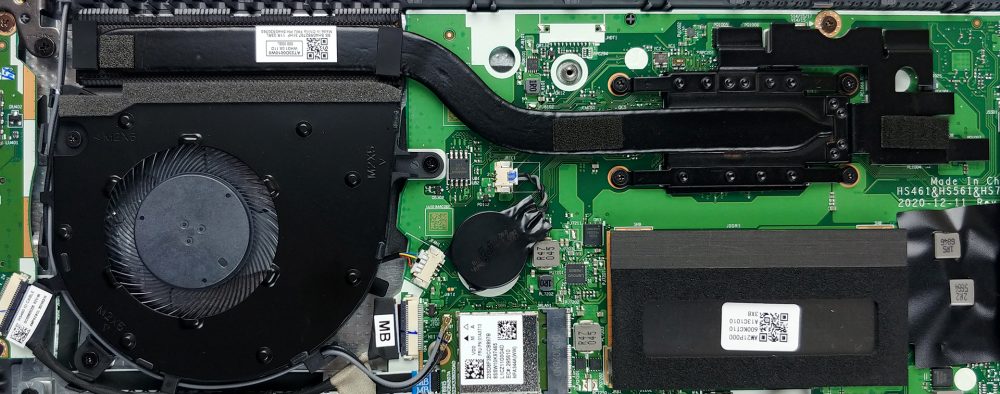
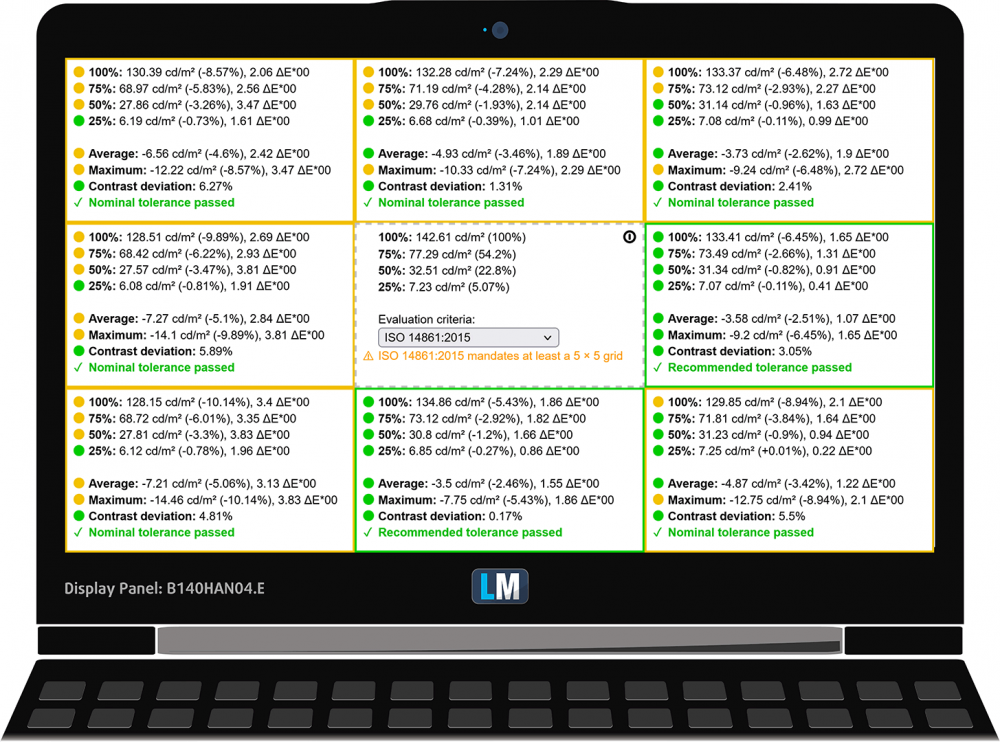

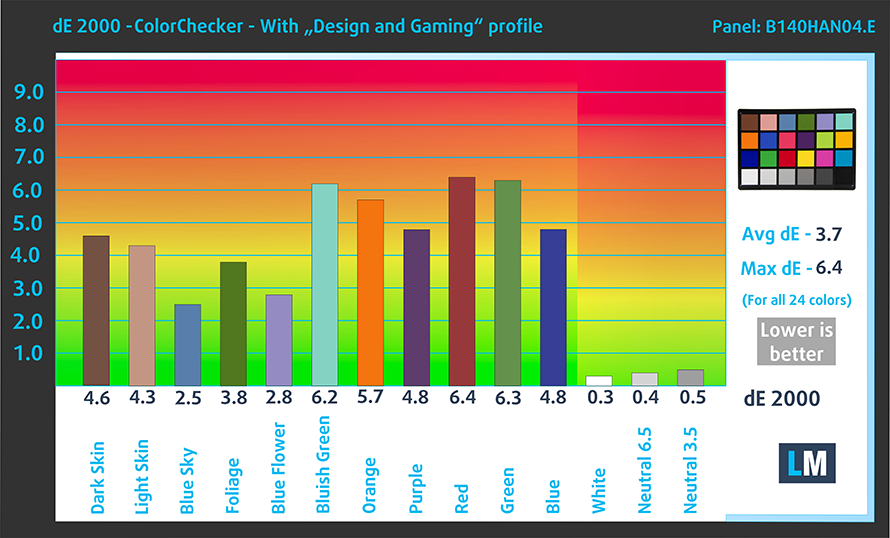

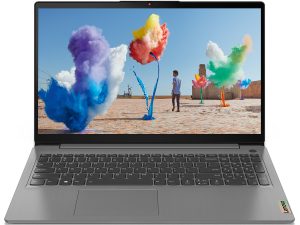










Thank you for this great review! Really made a good choice for an easy and capable machine for light office works.
Is it 1 or 2 x M.2 PCIe x4 slots? The video shows 1. Can fit/put 2280 size 1/2TB SSD?